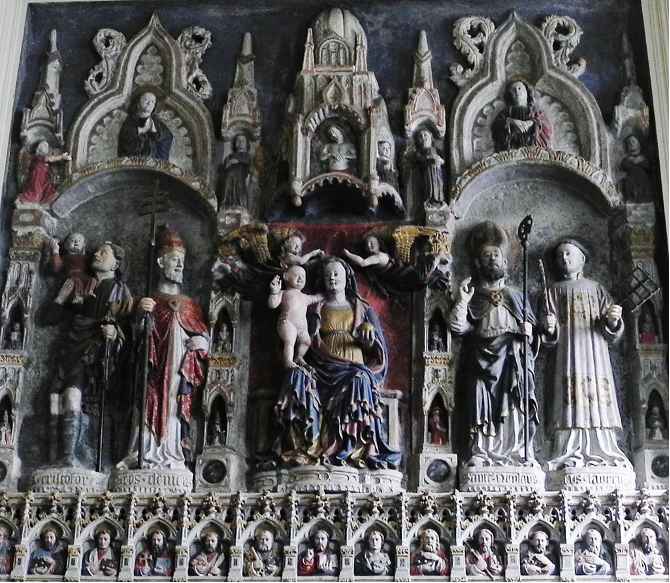The Sanctuary of S. Maria di Panisacco is located upstream the village of Maglio di Sopra, in the Municipality of Valdagno, and from the high cliff on which it rises, 469 m above sea level, it dominates the whole Agno Valley.
One of the hypothesis linked to the foundation of the Church (first building to be built in the foundation of the villages) is probably to be drawn from the title: San Clemente is in fact a Martin linked to the theme of water and was therefore the ideal patron for a valley in phase of reclamation and rich in water courses then exploited during the centuries for the different industrial activities (G. Cracco, Valdagno: alle origini di una storia e di un nome, in Storia della Valle dell’Agno. L’ambiente, gli uomini, l’economia).
The Cathedral of San Clemente was erected in the 18th century on the designs of the architects Giovanni Miazzi of Bassano (VI) and Luigi De Boni of Feltre (BL). The single nave presents articulations that host six chapels, and the walls are covered by 41 nineteenth-century paintings, almost all of them by Lorenzo Rizzi da Udine. In the sacristy it is possible to admire the stone ancòna of the extraordinary dimensions of 3,4 x 3,4 meters. The valuable work, belonging to the previous demolished church, is of historical interest since it is a rare altarpiece in carved stone. Previously it was above the high altar of the old demolished church. Signed by Girolamo and dated 1445, the altarpiece is one of the most remarkable examples of late Gothic sculpture in the territory of Vicenza. The work bears the inscription “opus Hjeronimis” and the date 1445, and it denotes typical stylistic characteristics of the Vicenza school of the late 15th century.
The organ was built by the firm Balbiani-Veggezzi-Bossi in 1942, formed by 2 keyboards with pedalboard, composed by 34 registers, 26 of which at the manuals and 8 at the pedalboard; restored by Francesco Paccagnella of Padua in 2001.
The bells of the bell tower are of particular interest and value. In chronological order, the oldest and largest one, called IL CAMPANON, dates back to 1645 and weighs “…libre 1800” (about 820 kg!).
(Sources: see links box)

